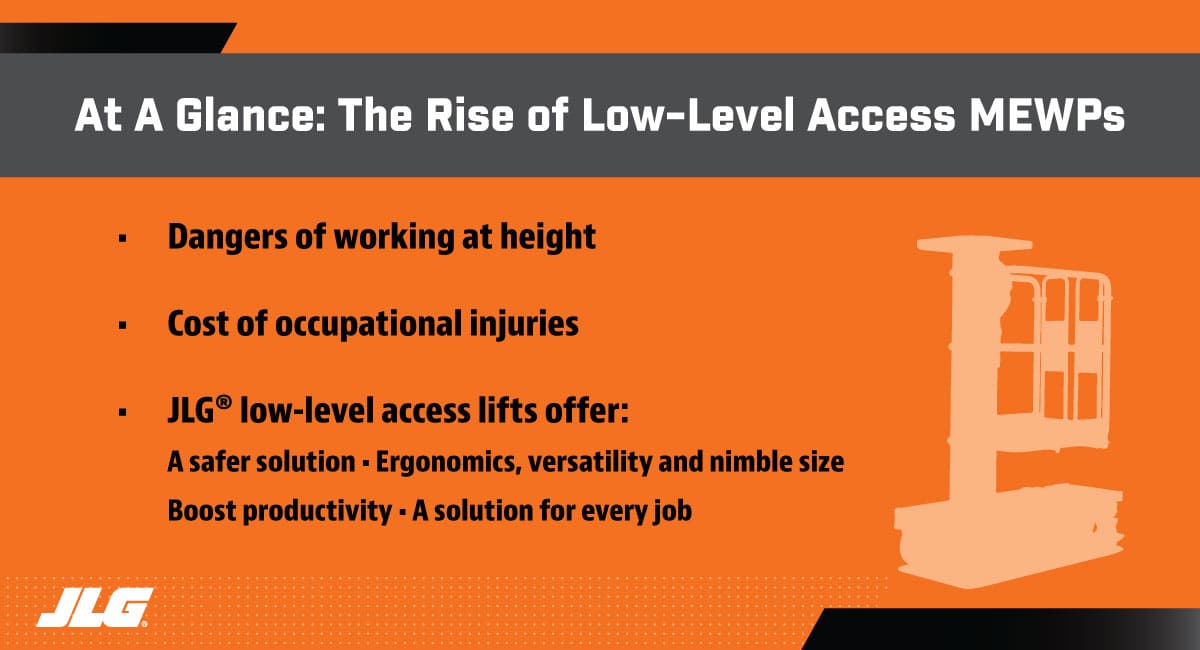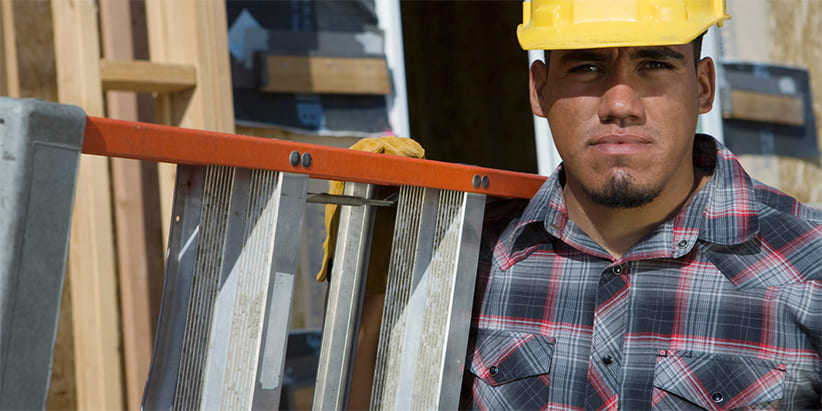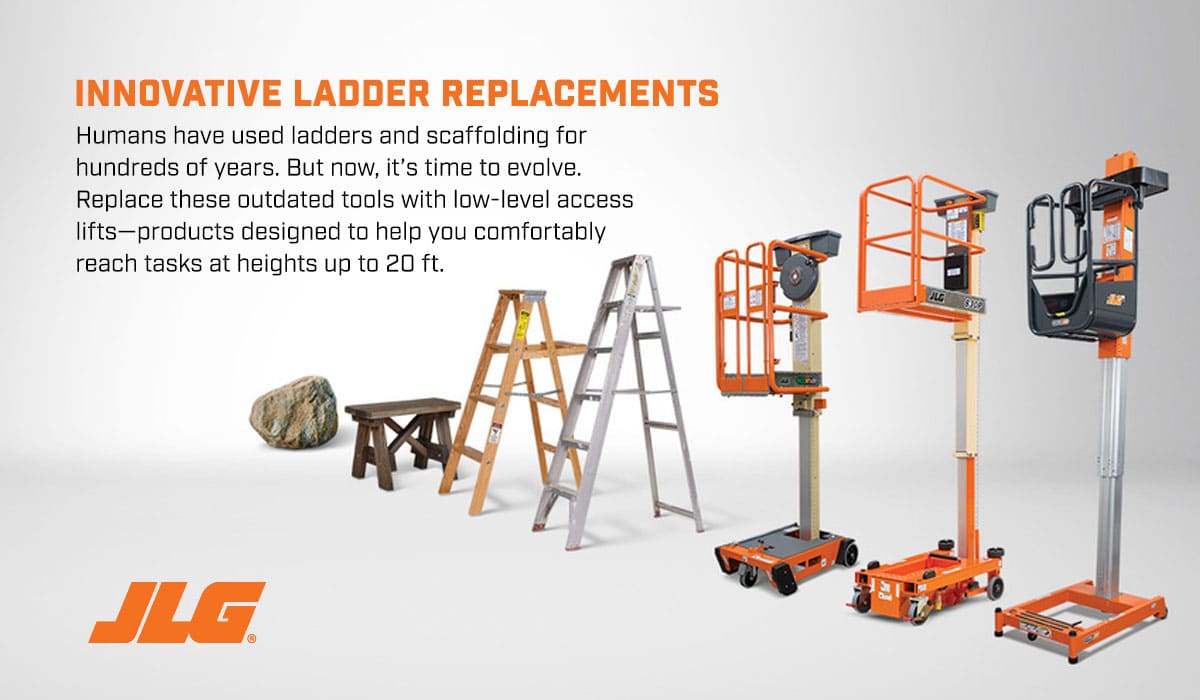The history of human innovation for working at height dates back centuries. Scaffolding – first depicted in drawings from ancient Greece in the 5th century BC – was fashioned from wood secured by rope knots.
Then, in 1862, American carpenter John H. Basely invented the first patented folding wooden stepladder. While designs have evolved over the years, both scaffolding and ladders continue to be hazardous for workers.

Dangers of Working at Height
According to a CDC report, 20% of workplace injuries from falls involve a ladderi . That statistic surges to 81% in the construction industry. In addition, more than 90,000 people receive emergency room treatment for ladder-related injuries each year.
Falls-from-height violations ranked three separate times in OSHA's Top 10 List of Violations for 2019. Fall protection ranked first with 7,014 citations, scaffolding was third with 3,228 and ladders sixth with 2,766 citations. As unsetting as these statistics are, they can also take a significant financial toll on employers in the areas of compensation and lost productivity.
Cost of Occupational Injuries
The costs of on-the-job injuries can be staggering. According to the 2019 Liberty Mutual Safety Index, serious, non-fatal injuries cost $189.81 million each week in the construction industryii. The number one cause was a fall to a lower level – accounting for 25.29% of construction injuries and totaling $2.5 billion in compensation.
Unfortunately, hundreds of fatal falls occur each year. The National Safety Council estimates a fatal injury at work costs companies over $1 million per fatalityiii . These numbers can be reduced by using safer alternatives for working at height.

Low-Level Access Lifts – A Safer Solution
Low-level access lifts offer a safer, more productive alternative to ladders and scaffolding that deliver a maximum work height of 20 feet. These equipment solutions also allow users to work with greater comfort, while eliminating the hassle of carrying tools and supplies up and down a ladder.
OSHA safety guidelines state that three-point (two hands and a foot, or two feet and a hand) contact must be maintained on a ladder when climbing . Low-level access lifts allow operators to use both hands for enhanced work confidence and a 360-degree range of motion.
Low-level access lifts allow operators to use both hands for enhanced work confidence and a 360-degree range of motion.
Ergonomics, Versatility and Nimble Size Boost Productivity
These lifts deliver superior ergonomics for users. The ability to carry additional equipment on the platform means fewer trips up and down ladders, which can significantly reduce fatigue – in addition to reducing the possibility of trips or falls. It also enables an ergonomic work position that reduces strain on the body and helps lower musculoskeletal injury risk.
Versatile low-level access lifts can replace multiple ladders, including single-sided stepladders, twin stepladders, podium stepladders and platform stepladders. These lifts are also easier to move through doorways or from one job to the next. With fewer components, low-level access lifts are a cleaner, quieter solution that are less disruptive to sensitive environments, such as schools and hospitals.
These lifts can further improve productivity by reducing the time it takes to assemble scaffolding. Compact footprints also make them easier to store, along with freeing up valuable space on the job site.

A Solution for Every Job
Low-level access lifts can be used in a variety of work environments to replace ladders or scaffolding. There are several types of low-level access lifts to support a wide range of industries and applications.
Personal portable lifts can be easily rolled through a facility and assembled or disassembled quickly, allowing workers to access catwalks, landings and other hard-to-reach areas. These lifts are ideal for applications including mechanical and electrical work, HVAC and ductwork, hanging drywall, painting, retail refit and display, construction finishing work and cleaning.
Non-powered vertical low-level access lifts like the JLG EcoLift™ Series can be used for many of the same applications as personal portable lifts. However, since the EcoLift is an eco-friendly solution with no batteries, hydraulics or oil, it is a completely leak free machine, making its various models ideal for performing facility maintenance in buildings, including schools, hospitals and data centers. They are also quieter since they can be pushed into place and lifted/lowered with the turn of a handle.
Powered vertical low-level access lifts combine height and reach with low ground bearing pressure, making them optimal for use on sensitive floors and when the need to move them between floors using elevators is required. Where power is required, these lifts help boost productivity during finishing work or routine maintenance in indoor spaces.

Regulations Drive Need for Safer Solutions
As OSHA, ANSI and other regulatory groups continue to implement stricter regulations to enhance worker safety on the job site, there will be a greater need for safer solutions when working at height. Incentives may soon be in place for construction companies that replace ladders or implement zero-ladder policies in an attempt to reduce worker injury.
With their ability to provide greater safety to workers and help mitigate the costs of occupational injuries, low-level access lifts will continue gaining popularity on the job site. Available in a variety of configurations, low-level access products offer contractors an alternative to ladders and scaffolding to help minimize slips, trips and falls associated with more traditional methods of working at height.
JLG offers a family of low-level access equipment solutions which can be found here.
Sources:
iOccupational Ladder Fall Injuries — United States, 2011
ii2019 Liberty Mutual Safety Index
iiiNational Safety Council estimates
ivOSHA Standard 1917.119 - Portable Ladders
Want to stay up to date with industry news and trends similar to this? Make sure you subscribe below to receive monthly updates from Direct Access with newly posted content so you never miss important information.